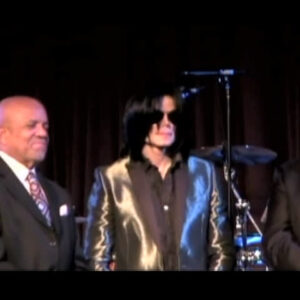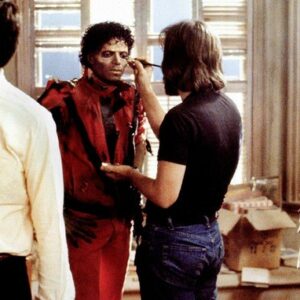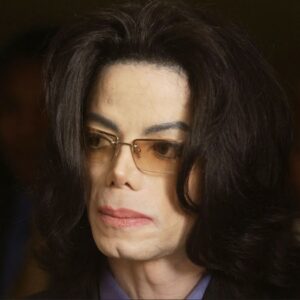Introduction: Mary J. Blige’s Musical Legacy
Mary J. Blige, often referred to as the “Queen of Hip-Hop Soul,” stands as one of the most influential figures in modern music. Her career, spanning over three decades, has seen her rise from a promising vocalist in the early 1990s to a musical and cultural icon. With her deeply resonant voice and raw, heartfelt lyricism, Blige has not only dominated the R&B and hip-hop charts but also redefined the boundaries of popular music and its relationship with dance. More than just a singer, she is an artist who has managed to transcend genres and consistently push the envelope of creativity.
From her early albums like What’s the 411? to more recent releases such as Strength of a Woman, Blige has always had an innate ability to craft music that resonates with listeners on a personal level. Yet, her contributions don’t stop at mere audio appeal. Her songs have become anthems, not just for women seeking empowerment, but for dancers and choreographers who find in her music a perfect canvas for artistic expression. In this sense, Blige’s work has had a profound impact on the evolution of contemporary dance, making her legacy as important to dance as it is to music.
The Danceable Heartbeat: Blige’s Rhythmic Innovation
A key aspect of Mary J. Blige’s musical legacy is the way her songs so seamlessly lend themselves to the dance floor. Blige has an unparalleled ability to infuse her songs with infectious rhythms that drive movement. Tracks like “Real Love” and “Family Affair” are built on pulsating beats and syncopated rhythms that naturally lend themselves to dance. It is no surprise, then, that her music has become a staple in dance clubs and choreography routines worldwide.
Blige’s collaboration with renowned producers such as Sean “Diddy” Combs and Dr. Dre played a pivotal role in creating songs with beats that marry well with dance. These producers, known for their groundbreaking contributions to hip-hop, helped craft tracks that were not only lyrically powerful but rhythmically dynamic. This rhythmic foundation has helped Blige’s music transcend its original genre, becoming a go-to source for dancers across various styles. Her songs often blend the sensibilities of R&B, soul, and hip-hop, offering an eclectic mix of beats that allow dancers to explore a wide range of movement possibilities.
One of the most iconic examples of this is her 2001 hit “Family Affair,” produced by Dr. Dre. With its bass-heavy groove and energetic tempo, the song became an instant hit in dance clubs worldwide. Its call to “let loose” is more than lyrical; it’s an invitation to dancers to explore their bodies in new and exciting ways. The track became a dance anthem, not just in urban settings but across mainstream pop culture. This danceability is a hallmark of Blige’s catalog—whether it’s the upbeat tempo of her tracks or the slow, emotional ballads, there is always an underlying rhythm that invites movement.
Crossing Boundaries: A Fusion of Genres and Dance Styles
What sets Mary J. Blige apart from many of her contemporaries is her ability to cross musical boundaries effortlessly. In an era when music genres were often rigidly defined, Blige’s sound was revolutionary. She didn’t confine herself to the realms of R&B and hip-hop but instead created a fusion of soul, gospel, jazz, and pop, providing a multifaceted backdrop for dancers. This genre-defying quality of her music mirrors the flexibility and diversity of modern dance.
Blige’s music has become a staple in various dance forms, from urban street styles like hip-hop and breaking to more traditional contemporary and modern dance. For instance, her emotionally charged ballads such as “Not Gon’ Cry” and “No More Drama” have been used extensively in contemporary dance routines that emphasize expression and storytelling through movement. Dancers gravitate to these songs not only because of their rhythm but because of their ability to convey complex emotions, making them ideal for narrative-driven choreography.
Her fusion of genres also mirrors the fusion of dance styles that have become popular in recent years. Hip-hop dance, with its roots in street culture, has increasingly incorporated elements of modern and contemporary dance, creating a hybrid form that is as much about storytelling as it is about technique. Blige’s music, which spans a similar spectrum, has provided the soundtrack for this evolution, helping to blur the lines between dance styles in much the same way she has blurred the lines between musical genres.
Emotion in Motion: The Impact of Blige’s Lyrics on Dance
At the core of Mary J. Blige’s appeal, both as a musician and as a muse for dancers, is the emotional depth of her music. Her songs often deal with themes of struggle, heartbreak, resilience, and empowerment, providing fertile ground for dancers to express complex emotions. Dance, as a form of storytelling, finds a natural partner in Blige’s music, which often reads like a deeply personal diary entry.
One of the most powerful examples of this emotional connection is her song “No More Drama.” The track, with its gospel-inspired chords and impassioned vocals, speaks to the desire to break free from emotional turmoil. It has been used in countless dance routines to explore themes of liberation and self-empowerment. Dancers connect to the rawness of Blige’s voice, using movement to interpret the catharsis that the song embodies. In this way, her music becomes more than just a backdrop for movement—it becomes the catalyst for it.
Similarly, “I’m Goin’ Down,” a cover of the classic Rose Royce song, takes on new life in dance through Blige’s soulful delivery. The track’s slow tempo and mournful lyrics lend themselves to emotional, almost theatrical interpretations in contemporary dance. It’s this ability to convey deep emotion through her voice that has made Blige’s music so beloved in the dance community. Dancers often seek music that allows them to connect emotionally, and Blige provides that in abundance.
Inspiring a New Generation: Blige’s Lasting Influence on Dance
Mary J. Blige’s influence on the world of dance is not just a thing of the past—it continues to resonate with contemporary choreographers and dancers. Many modern artists cite Blige as a key influence, and her music remains a go-to for both professional and amateur dancers. This is especially true in the realm of competitive dance, where Blige’s tracks are frequently used for routines that aim to showcase both technical prowess and emotional depth.
For instance, Blige’s music has been featured in popular dance competition shows like So You Think You Can Dance and Dancing with the Stars, where her songs have been interpreted in a wide variety of styles, from hip-hop to ballroom. These performances highlight the versatility of her music and its ability to transcend genre boundaries, much like Blige herself has done throughout her career.
Blige’s legacy also extends to the world of viral dance trends. In recent years, platforms like TikTok have become incubators for dance challenges, many of which feature her tracks. These viral dance trends are often rooted in the emotional connection people feel to her music, further solidifying her place as an enduring figure in both music and dance.
Conclusion: Mary J. Blige—A Timeless Influence on Music and Dance
As we look back on Mary J. Blige’s career, it becomes clear that her influence goes far beyond the realm of music. She is a cultural icon whose work has shaped not just the sound of modern music, but also the way we move to it. Her songs, filled with emotional depth and rhythmic complexity, have become anthems for dancers around the world, inspiring countless routines and performances.
Blige’s ability to fuse genres, coupled with her deeply personal lyricism, has made her a key figure in the evolution of contemporary dance. Her music, much like her persona, is a testament to resilience, empowerment, and the transformative power of art. As dancers continue to explore new ways of expressing themselves, Mary J. Blige’s music will undoubtedly remain a guiding force, proving that her legacy is as much about movement as it is about melody.
In every beat, every lyric, and every dance move inspired by her work, Mary J. Blige’s legacy lives on.





